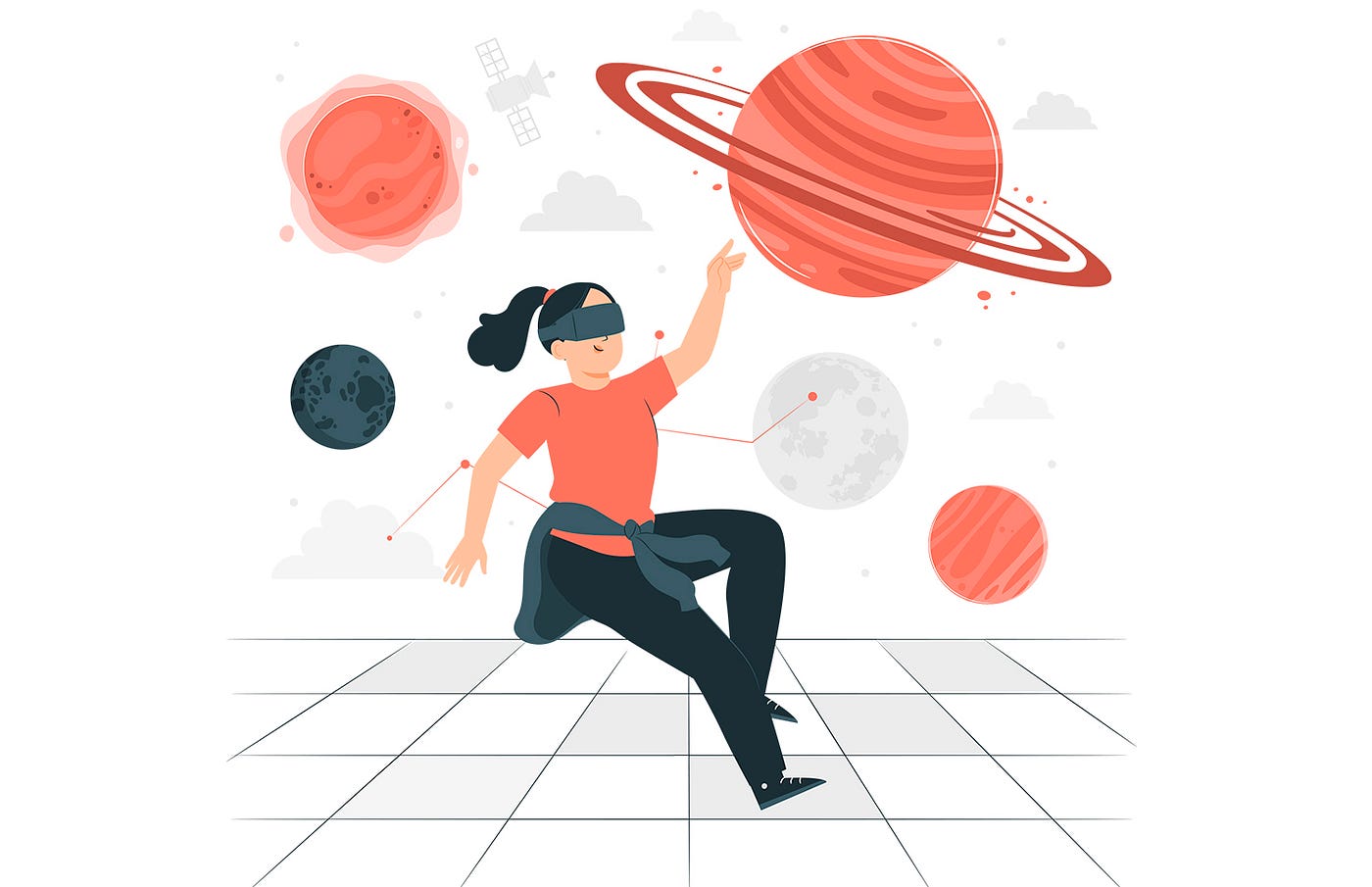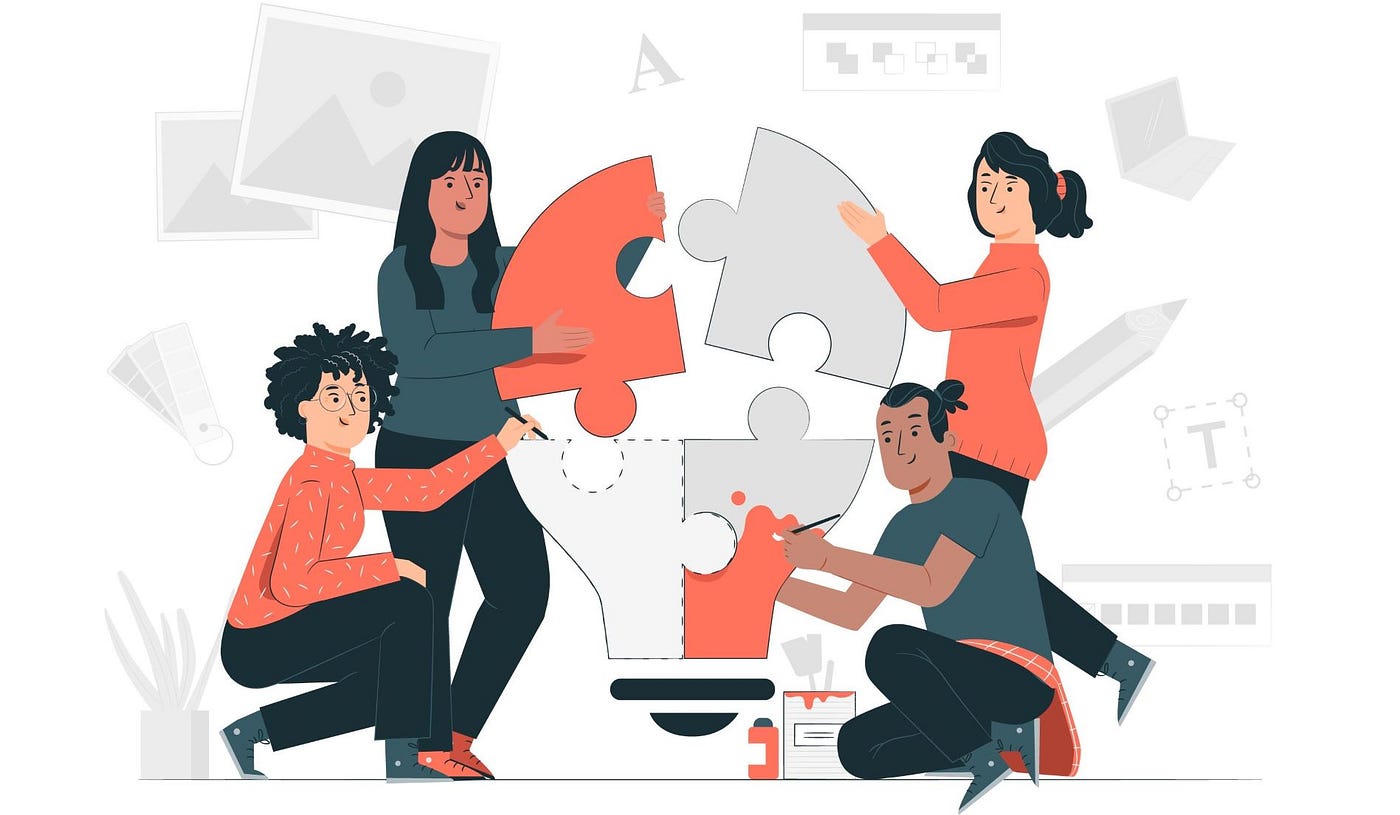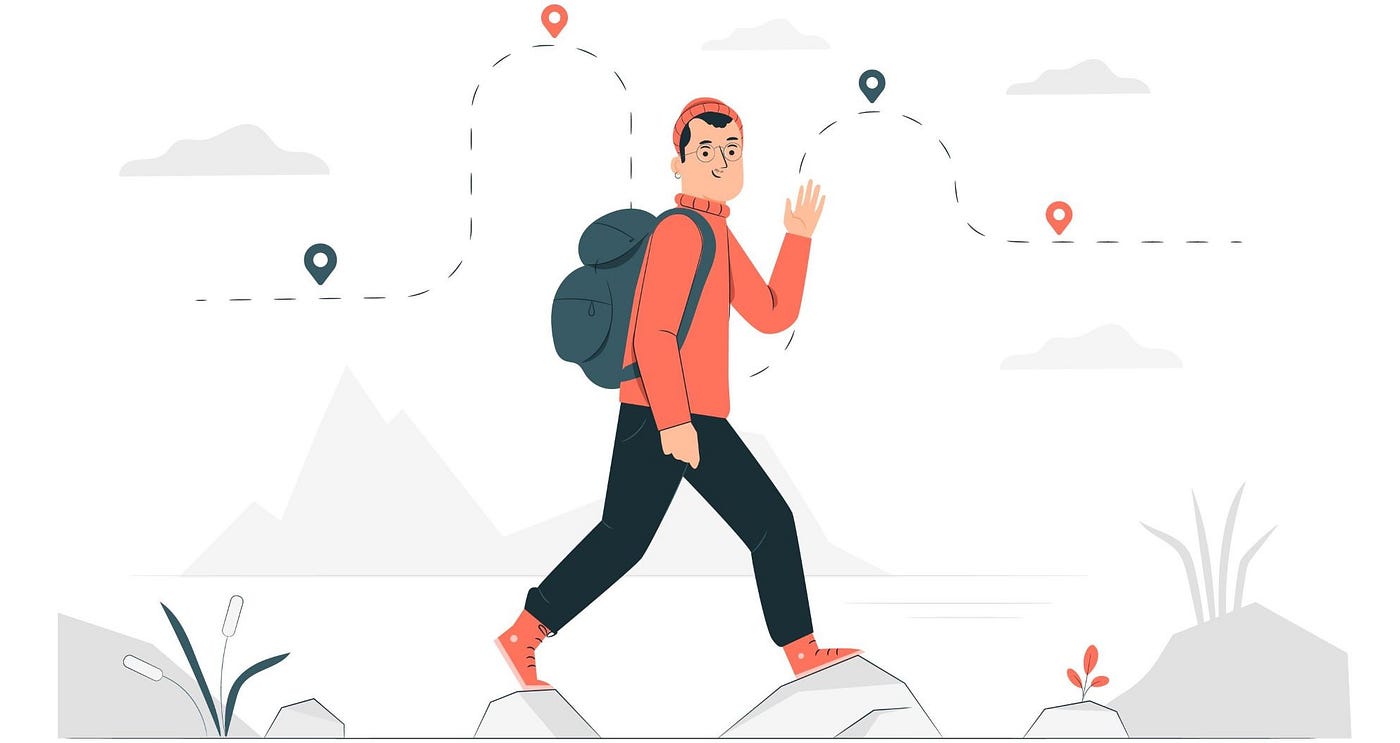

How does VR fare in terms of accessibility and inclusion?
source link: https://uxdesign.cc/how-does-vr-fare-in-terms-of-accessibility-and-inclusion-bd9844c86da8
Go to the source link to view the article. You can view the picture content, updated content and better typesetting reading experience. If the link is broken, please click the button below to view the snapshot at that time.

How does VR fare in terms of accessibility and inclusion?
Virtual reality carries the potential to transform and possibly even shape many aspects of our daily lives. But does it consider all demographics and needs or is it turning a blind eye to certain mobility-related challenges?
Though we might still regard VR tech as a niche product and invention in its infancy, it is undeniably inching towards us. To put this in context, currently, 25 percent (or 70.2 million) of internet users in the US are predicted to have interacted with VR by 2023.
With a worldwide market that is expected to be valued at $12.19 billion by 2024, virtual reality is set to grow significantly from the $6.71 billion estimated for this year. However, it has yet to mature into a widely accepted and adopted field that would set prospective users’ minds at ease.

The leading reasons most often cited in a 2020 survey were the lack of content provided, unsatisfactory UX, general reluctance by businesses as well as consumers, legal considerations, and finally, the costs involved. With a field still so green and wanting for trust, it might make you wonder if there is any attention given to a broader audience, at all? Perhaps, but not quite in the way you’d think.
One of the top industries that find VR useful is healthcare and medical devices. Prior research has already looked at how this technology can be adapted for therapeutic applications to aid people with motor disabilities, which is a noble goal — but what about good old-fashioned fun?
Let’s inspect it from a more mainstream usability angle, because presuming that people with limited mobility are not interested in playing VR games and trying applications would be misguided at best.
Highlighting accessibility barriers
When considering people with limited mobility, researchers identified seven barriers related to the physical accessibility of VR devices. For the record, some (or multiple) of these problems could also be encountered by people without mobility limitations, so at the end of the day, we’re all in this together.
1) Setting up a VR system. This relates to the initial preparations for arranging the tech involved, as they can require fine motor skills, such as placing batteries inside controllers or plugging in cords. Due to these challenges, participants noted that they would require assistance in order to get things up and running. Defining the surrounding play boundaries was another concern as users would need to consider movement limitations and potential hazards in their physical environment.
2) Putting on and taking off VR headsets. The weight of the device would determine if users could put it on alone (and how much effort would go into it) or if they would need help with this. A sub-problem here is that headsets in general are not designed to be equipped collaboratively, so this could be an uncomfortable start. Users also noted feeling vulnerable and reluctant to play without assistance nearby, in case they can’t take it off by themselves.
3) Adjusting the headset’s strap. Several participants pointed out that the knobs were poorly positioned, and the strap could interfere with the headrest of their power wheelchair, resulting in discomfort. The adjustment controls being at the back of the headset also made them difficult to access, rendering them impractical when considering physical limitations. Placing these near the front or side of the headset was suggested for improved reachability.
4) Cord management. When it comes to tethered VR systems, cords can be a hazard to users in power chairs or to those with balance issues, in general. Participants expressed concern over tripping or running over cords, and getting entangled in them — as a bottom line, wireless headsets can serve as a simple solution to remedy this rocky obstacle.
5) Manipulating dual motion controllers. Holding and using two controllers simultaneously whilst moving in the physical world can be another major barrier. Certain tasks such as rotating and scaling virtual objects in VR require users to coordinate manipulations by moving both controllers. This can prove to be a frustrating issue for those with little or no movement in their hands, or where fine movements are challenging.
6) Inaccessible controller buttons. Participants also described challenges with reaching, pressing, and holding down buttons on motion controllers. The size and weight of them must also be adjusted for an ideal user experience, and even the texture can play a role in the accessibility of buttons.
7) Maintaining view of the controllers. VR systems that use inside-out tracking require that controllers be kept in view of the headset’s cameras. This allows users to see the virtual representation of controllers while in VR, but some participants felt uneasy about having to hold up their hands for extended periods of time. Users also questioned whether the setup is intuitive, to begin with— for example, when the headset loses track of the controller, it can be difficult to know which button to press.
Now that we’ve covered some overarching barriers, there are some additional points on headsets to emphasise.
Head-mounted displays need some work
When researchers Malu and Findlater investigated the accessibility of Google Glass, they found mixed results. Whilst the hand-free nature of the gear had benefits over desktop or mobile systems, its touchpad was giving participants a hard time, to the point that some couldn’t use it, at all.
Another study looked at how Google Glass fared in terms of usability for people with Parkinson’s disease. Despite participants being enthusiastic about the possibilities and potentials of it, they too experienced difficulties. The device often wouldn’t recognise their speech and performing tap gestures was a challenge, as the touchpad was, “fiddly”, “too responsive” and “unpredictable,” according to users.
One more minor issue was resorting to workarounds when using prescription glasses — in this case, the Google tech had to be worn over those.
Since VR systems also use similar headsets, the same accessibility barriers apply, but there are also additional problems. For one, VR devices tend to be bulkier and heavier than Google Glass, which participants have repeatedly called out as a sizeable problem. At the same time, VR systems use certain more advanced controls that might not be user-friendly for people with limited mobility.

Rethinking input methods
The same study that defined the seven categories of physical accessibility barriers also summarised participant suggestions on alternative input methods for manipulating objects in VR.
One participant suggested using alternative controllers such as the Xbox Adaptive Controller. Whilst it might take some time to get used to other buttons compared to the traditional layout, once the user adjusts to it, the overall experience is better, and it feels natural according to one participant. Switches have also been recommended instead of motion controllers to require less arm movement. In general, more options and customisations would be a welcome solution.
Voice commands could also be an accessible alternative to motion controllers. Participants were concerned if the voice recognition system would work as intended, because based on previous experiences this area was still lacking and required improvements. Still, even combining a single controller with voice input could boost usability here, as per suggestions.
Some participants mentioned that gaze-input might work well for selecting objects as a form of explicit input. Meanwhile, automatic scrolling once a user has finished reading a sentence would be an example of implicit input, and both forms of eye-tracking could be integrated into VR systems.
Functional design considerations
One of the highlighted obstacles was how VR systems are not designed for assisted use. Problems could arise from the headset not being easy to put on one person by the other, so it is important that there is a good flow of communication between the user of the VR and the person aiding them.
Hence, here is an opportunity to design VR for interdependence as much as independence, in order to allow for more user-friendly and cooperative setup processes. By considering both parties at the initial stages already, the user can have a more empowering experience and certain discomforting barriers can be knocked down.
Designing for customisation would also speak to a need that is going ignored. Creating unique input devices for people with limited mobility would address a concern around dexterity needed for VR and interaction styles that require pressing or holding buttons for lengthier times. Improving the accuracy of voice and gaze input could also offer further solutions for a more user-friendly experience.
When designing for diversity, it’s important to keep in mind that the opportunities enabled by virtual environments may be particularly uplifting and beneficial for people who experience constraints in the physical world. Just to give you an idea, a study has confirmed that people with mobility restrictions are interested in virtual experiences of real-world activities that would otherwise not be accessible to them — such as paragliding.
Finally, research also suggests thatdesigning for ability is another point to consider. Not-so paradoxically, rather than focusing solely on disabilities, opting to build around abilities possessed by people with limited mobility will allow creating VR devices that take a more empowering approach.

We can do better
Since VR is still just getting started, it would do well to consider accessibility needs already at the outset — which is now. It would be ignorant to tailor VR to a more mainstream audience only, when it could bring heaps of joy to those who are not able to experience things that people with no disabilities can do.
VR is here to stay, so its more restrictive elements could do with an accessibility revamp. Both software and hardware should consider implementing (be it scientific and/or UX-driven) research-supported features to boost inclusivity and avoid people feeling left out from the newest, shiniest tech introductions.
Thanks for reading! ❤️
If you liked this post, follow me on Medium for more!
References & Credits:
- Virtual reality (VR) — statistics & facts by Statista
- Industry leaders weigh in on the future of AR and VR by Perkins Coie
- de Greef, L., Morris, M., & Inkpen, K. (2016, February). TeleTourist: Immersive telepresence tourism for mobility-restricted participants. In Proceedings of the 19th ACM Conference on Computer Supported Cooperative Work and Social Computing Companion (pp. 273–276).
- Malu, M., & Findlater, L. (2014, October). “ OK Glass?” A Preliminary Exploration of Google Glass for Persons with Upper Body Motor Impairments. In Proceedings of the 16th international ACM SIGACCESS conference on Computers & accessibility (pp. 267–268).
- Mott, M., Tang, J., Kane, S., Cutrell, E., & Ringel Morris, M. (2020, October). “I just went into it assuming that I wouldn’t be able to have the full experience” Understanding the Accessibility of Virtual Reality for People with Limited Mobility. In The 22nd International ACM SIGACCESS Conference on Computers and Accessibility (pp. 1–13).
- Sveistrup, H. (2004). Motor rehabilitation using virtual reality. Journal of neuroengineering and rehabilitation, 1(1), 1–8.
- Vines, J., McNaney, R., Holden, A., Poliakov, I., Wright, P., & Olivier, P. (2017). Our year with the glass: Expectations, letdowns and ethical dilemmas of technology trials with vulnerable people. Interacting with Computers, 29(1), 27–44.
- Wobbrock, J. O., Gajos, K. Z., Kane, S. K., & Vanderheiden, G. C. (2018). Ability-based design. Communications of the ACM, 61(6), 62–71.
- Images by storyset on Freepik
Recommend
-
 79
79
Hipmunk is all about discovering a better travel experience, and that requires knowing the alternatives. So each night, Hipmunk conducts proactive searches of a little over 100 million possible trips, which are then place...
-
 7
7
Fare Hacking on BART Stephen Brennan • 23 July 2016 Imagine that you’re taking a long train ride on the BART. Maybe from Millbrae to North Concord. Chances are, at the very same moment, somebody else is going the oth...
-
 7
7
Accessibility and Inclusion in the Swift Community December 16, 2020The Diversity in Swift work group is a group of volunteers working to make our community more approachable and inclusive. Diver...
-
 7
7
HomeComputeHigh-End Chipmakers to Fare Far Better During Semiconductor CrisisHigh-End Chipmakers to Fare Far Better During Semiconductor...
-
 9
9
Fare Thee Well, Glen Creason Glen Creason holding up a map in the Map Cave “I’m going from my valley. And this time, I shall never return. I am leav...
-
 9
9
Framing accessibility in broader terms February 13, 2022 on Drew DeVault's blog Upon hearing the term “accessibility”, many developers call to mind the HTML ARIA a...
-
 11
11
Fulfilling our commitment to accessibility and inclusion February 3, 2022 3 min read
-
 11
11
April 15, 2022
-
 6
6
DGCA removes fare caps on domestic flights tickets (from Aug 31) August 10, 2022
-
 8
8
Inclusion Through User Choice — Smashing MagazineCSS And Accessibility: Inclusion Through User ChoiceIt is challenging to accurately understand the preferences of ove...
About Joyk
Aggregate valuable and interesting links.
Joyk means Joy of geeK